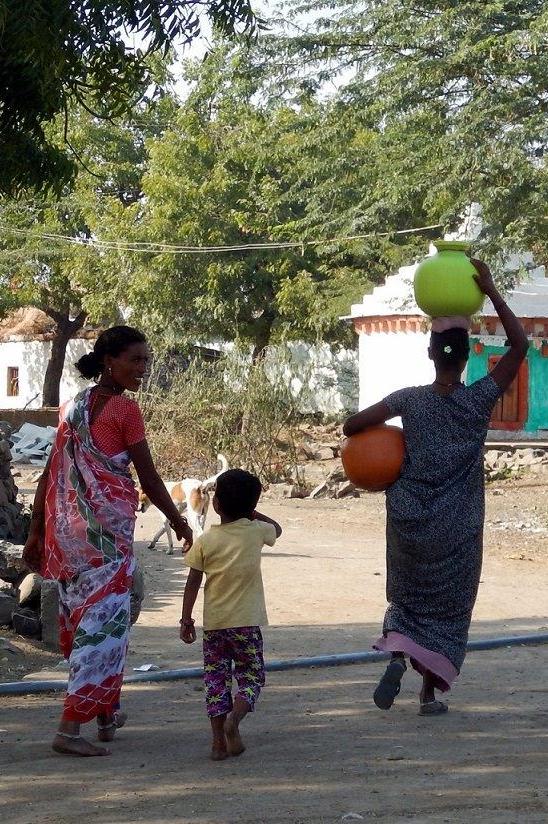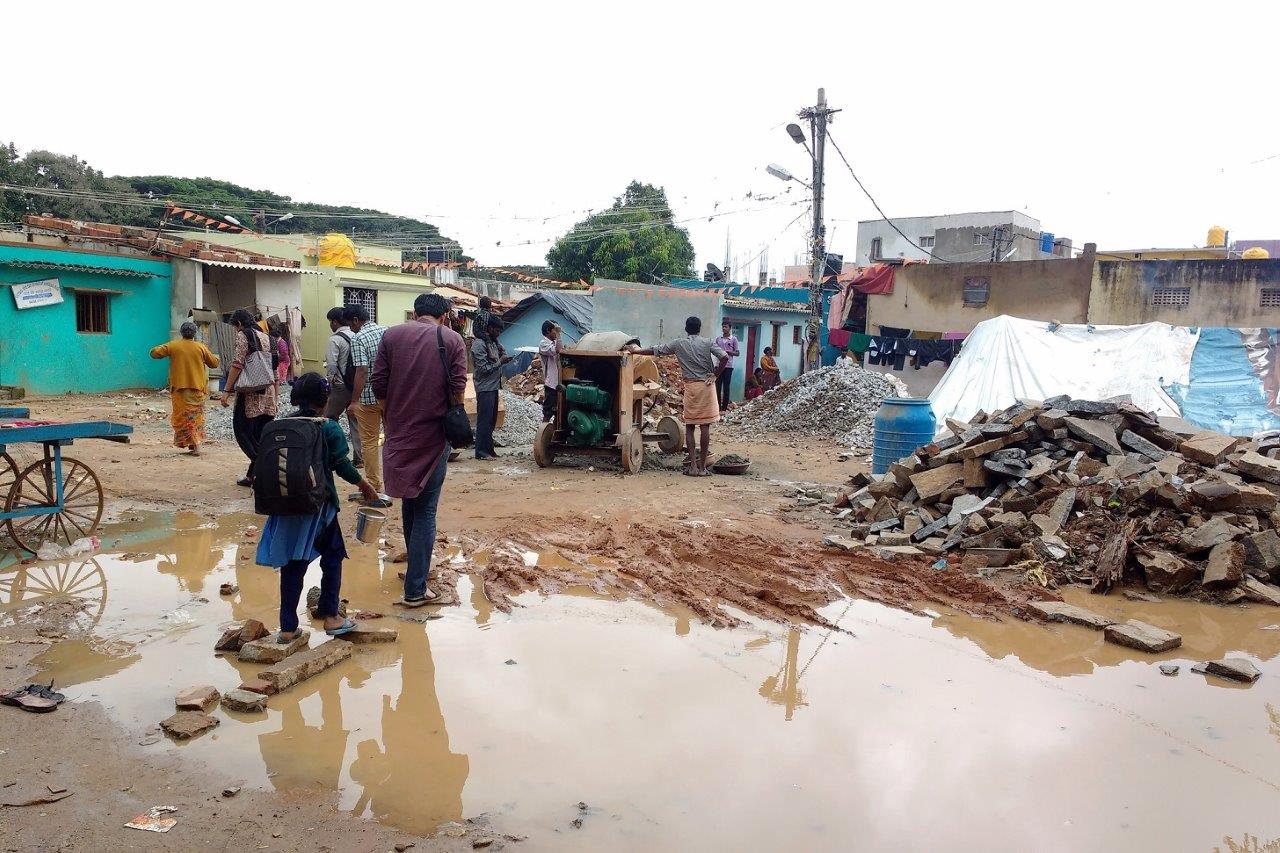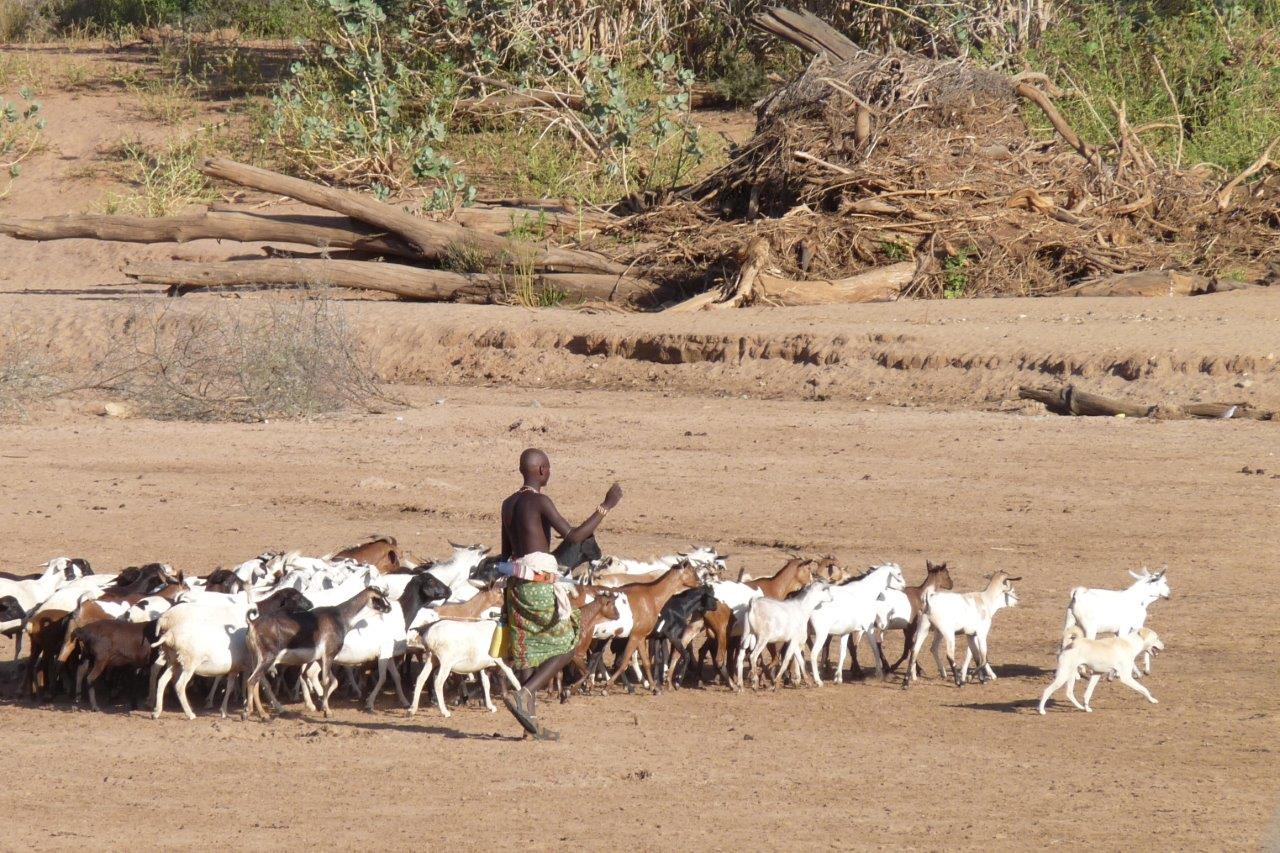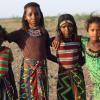Jump to: ASSAR's focus on mobility | Key insights | Contact | News stories | Outputs
Mobility is an important strategy to manage risk in semi-arid regions, but it doesn’t always lead to improved wellbeing. Whether moving or staying put, risks can increase for those with little agency. Conversely, mobility can provide the means to move out of risky locations and improve livelihoods. In these cases, migration contributes to improved wellbeing and adaptive capacity.

ASSAR’s focus on mobility
Semi-arid regions are crucibles of change in which different stressors coalesce, increasing the pressure on populations who are in many cases already vulnerable. Within these environments, mobility is an essential feature in many people’s lives, and represents a key risk-management strategy, enabling populations to respond to livelihood shocks and stresses. Over time, risks change and evolve as do risk management behaviours, including mobility. Unpacking the multiple, intersecting vulnerabilities that are manifest in semi-arid regions is critical to generate greater insights into the ‘how and why’ of risk management, and to enable more equitable and effective adaptive responses.
ASSAR investigated the role of mobility as an adaptive response to change within populations in semi-arid regions. The dynamic and intersectional nature of risks and responses is not well articulated in global environmental change literature. Using empirically-rich data, our research highlights how people’s approaches to managing risks are individualised but set within other social institutions, such as households and communities. It also points to the importance of mobility within risk-management strategies. Mobility can facilitate changes to risk portfolios in a number of ways, including accentuating or attenuating risks, eradicating risks entirely, or exposing populations to completely new risks. Conversely, sometimes mobility doesn’t lead to any changes in the underlying risks people are exposed to. Changes are shaped by a person’s agency, which is set within a web of broader social structures.
Over time, we see how the risks that people experience, and their responses to them, alter their wellbeing trajectories. Through a novel theoretical concept – the ‘adaptation option space’ – our evidence suggests that it can sometimes become increasingly difficult to shift downward wellbeing trajectories. Using the life history methodology helps to reveal these wellbeing trajectories, capturing the temporality of risks, livelihood choices, adaptation outcomes, and their interrelationships. This approach shows how current responses are influenced by past events, and enables us to infer how current behaviours may influence future, as yet unknown, events.
Key insights
Everyday mobility enables people in semi-arid regions to maintain their livelihoods, and manage risk
The use of mobility in semi-arid regions is the norm rather than the exception, supporting a variety of livelihoods reliant on natural resources (such as firewood collection or pastoralism), in addition to trading and more regularised commuting from rural areas to large urban settlements. Mobility is a key resource that people draw upon to manage highly dynamic conditions.

Risks and responses are dynamic and interact with one another to shape the options available to people over time
Mobility occurs within a dynamic context of intersecting risks and responses that change over time. These interactions shape the 'adaptation option space' – the space available to people to adapt given the risks they face, responses they undertake, and adaptive capacities they hold. Different individuals and households respond differently, and the outcomes of mobility also vary. The life history approach shows how risks and adaptation options change over time, and their implications on wellbeing. Knowing where people have come from helps to understand not only their current situation but also their ability to respond to future, as yet unknown, livelihood stresses.
Migration is not always beneficial so alternatives should be explored to avoid risks to migrants and those left at home
There are trade-offs associated with moving. At an intra-household level, migration and commuting can alleviate vulnerability for some family members while exacerbating the vulnerability of those left behind. At a larger scale, migration that is adaptive at a household scale can be maladaptive at a system- scale if cities are unable to provide for or absorb migrants who often live in highly vulnerable conditions. On a temporal scale, migration and commuting affect livelihood trajectories and choices of those beyond the migrants alone. We found evidence of migration decisions shaping opportunities across generations.

Click here for more detail, and ASSAR's specific recommendations for policy, practice, and research
Contact
|
Mark Tebboth (M.Tebboth@uea.ac.uk), University of East Anglia Chandni Singh (csingh@iihs.ac.in), Indian Institute for Human Settlements Dian Spear (dian.spear@gmail.com), University of Cape Town |
Related news stories
Related outputs
|
Type |
Author(s) |
Year |
Title |
Details |
Links |
|---|---|---|---|---|---|
| Information brief | Adiku, P. and Khan, A. | 2018 | Migration in climate change hotspots: Opportunities and challenges for adaptation. | Collaborative Adaptation Research Initiative in Africa and Asia (CARIAA). | |
| Information brief | ASSAR | 2017 | Promoting effective and sustained adaptation in East Africa. | ||
| Information brief | CARIAA | 2018 | Understanding migration in India. | ||
| Information brief | Degefu, M. A., Assen, M. and Tesfaye, M. | 2019 | Prosopis juliflora: Impacts and management in the face of climate change in Ethiopia’s Middle Awash Valley. | ||
| Information brief | Few, R. | 2017 | Drought does not work alone. | ||
| Information brief | Michael, K., Singh, C., Deshpande, T. and Bazaz, A. | 2017 | Dimensions of vulnerability in rural and urban areas: A case of migrants in Karnataka. | ||
| Journal article | Few, R. and Tebboth, M. G. L. | 2018 | Recognising the dynamics that surround drought impacts. | Journal of Arid Environments, 157: 113-115. | Summary; Information brief |
| Journal article | Michael, K., Deshpande, T. and Ziervogel, G. | 2018 | Examining vulnerability in a dynamic urban setting: The case of Bangalore’s interstate migrant waste pickers. | Climate and Development. | Summary; Information brief |
| Journal article | Rivers III, L., Sanga, U., Sidibe, A., Wood, A., Paudel, R., Marquart-Pyatt, S. T., Ligmann-Zielinska, A., Olabisi, L. S., Du, E. J. and Liverpool-Tasie, S. | 2017 | Mental models of food security in rural Mali. | Environment Systems and Decisions. | Summary; Information brief |
| Journal article | Singh, C. | 2017 | Using life histories to understand temporal vulnerability to climate change in highly dynamic contexts. | SAGE Research Methods Cases. | Summary; Manual |
| Journal article | Singh, C., Rahman, A., Srinivas, A. and Bazaz, A. | 2018 | Risks and responses in rural India: Implications for local climate change adaptation action. | Climate Risk Management, 21: 52-68. | Summary; Information brief |
| Journal article | Yidana, A., Mensah, A., Salifu, M. and Owusu, K. | 2018 | Social differences in the vulnerability and adaptation patterns among smallholder farmers: Evidence from Lawra District in the upper west region of Ghana. | Journal of Economics and Sustainable Development, 9(10): 175-187 . | Summary |
| Publication in progress | Camfield, L., Leavy, J., Endale, S. and Tefere, T. | _ | ‘People who once had 40 cattle are left only with fences’: Coping with Persistent Drought in Awash, Ethiopia. | Presentation | |
| Publication in progress | Few, R., Satyal, P. and Tebboth, M. G. L. | _ | Using a justice/ capabilities framing to understand people's vulnerability and adaptive capacity in the drylands of East Africa. | ||
| Publication in progress | Gitonga, Z. and Visser, M. | _ | Impact of migration on household social protection and wellbeing: An application of dose-response using control function approach. | ||
| Publication in progress | Maharjan, A., de Campos, R. S. Das, S., Srinivas, A., Bhuiyan, M. R. A., Ishaq, S., Shrestha, K., Dilshad, T., Umar, M. A., Bhadwal, S., Ghosh, T., Singh, C., Suckall, N. and Vincent. K. | _ | Migration and adaptation in the context of environmental change: Lessons from interdisciplinary work in South Asia. | ||
| Publication in progress | Michael, K., Deshpande, T. and Bhaskara, K. | _ | The political economy of climate change and vulnerability in a neo-liberal city: A case of Bengaluru's informal settlements. | Summary | |
| Publication in progress | Rahman, A., Basu, R. and Singh C. I. | _ | Exploring the interface between climate change and migration: Evidence from India. | ||
| Publication in progress | Rahman, A., Singh, C. and Srinivas, A. | _ | Mobility along the rural-urban continuum around a large Indian metropolis: Implications for climate adaptation. | ||
| Publication in progress | Singh, C. and Basu, R. | _ | Moving in and out of vulnerability: Interrogating migration as an adaptation strategy along a rural urban continuum in India. | Summary | |
| Publication in progress | Tebboth, M. G. L., Singh, C., Spear, D., Mensah, A. and Ansah, P. | _ | The role of mobility in changing livelihood trajectories: Implications for vulnerability and adaptation in semi-arid regions. | Summary | |
| Publication in progress | Wasonga, O., Kibet, S., Tebboth, M. G. L., Few, R. | _ | Do wildlife conservancies enhance the adaptive capacity of local communities? Perspectives from northern Kenya. | ||
| Report | ASSAR | 2019 | Effective adaptation means different things to different people. | ||
| Report | Singh, C., Basu, R. and Srinivas, A. | 2016 | Livelihood vulnerability and adaptation in Kolar District, Karnataka, India: Mapping risks and responses. | ||
| Report | Tebboth, M. G. L. and Few, R. | 2018 | Considering the future of Prosopis: Participatory Scenario Analysis in Afar, Ethiopia. | ||
| Report | Tebboth, M. G. L. and Few, R. | 2018 | Considering the future of the rangelands: Participatory Scenario Analysis in Isiolo, Kenya. | ||
| Thesis | Berthe, T. | 2016 | La Migration et la Variabilité de la Vulnérabilité des Groupes Sociaux: Cas du Village de M’Pessoba. | Master's thesis. Institut Universitaire de Développement Territorial de Bamako (IUDT. | |
| Thesis | Biney, A. | 2019 | The role of remittances on adaptive capacity of smallholder farmers in Lawra district. | Master's thesis. University of Ghana. | |
| Thesis | Gitonga, Z. | _ | Leveraging climate information, improved adaptive technology and migration to build resilience and reduce vulnerability of rural communities to climate risks in arid and semi-arid lands. | PhD thesis. University of Cape Town. | |
| Thesis | Plea, A. | 2016 | Stratégie d’Adaptation des groupes sociaux face aux changements climatiques: Cas du maraîchage dans le village de Koumbri (Commune de Yognogo, Cercle de Koutiala). | Master's thesis. Institut Universitaire de Développement Territorial de Bamako (IUDT). | |
| Thesis | Yidana, A. A. | 2016 | Social differentiation in the vulnerability and adaptation patterns among smallholder farmers: Evidence from north western Ghana. | Master's thesis. University of Ghana. | |
| Toolkit/guide | Davies, J., Singh, C., Tebboth, M. G. L., Spear, D., Mensah, A. and Ansah, P. | 2018 | Conducting life history interviews: A how-to guide. [Manual] | ||
| Video | ASSAR | 2016 | Transformative Scenario Planning in ASSAR. | ||
| Video | ASSAR | 2018 | Climate knowledge brokering in Nagaland, India. | ||
| Web article | Singh, C. | 2015 | What farmers really need - And it isn't 'skilling' or relief packages. | Huffington Post. 16 October 2015. | |
| Working paper | Few, R., Satyal P., Assen M., Camfield L., Leavy J. and McGahey D. | 2018 | The development-adaptation spectrum in dryland East Africa: mapping risks, responses and critical questions for social research. |


